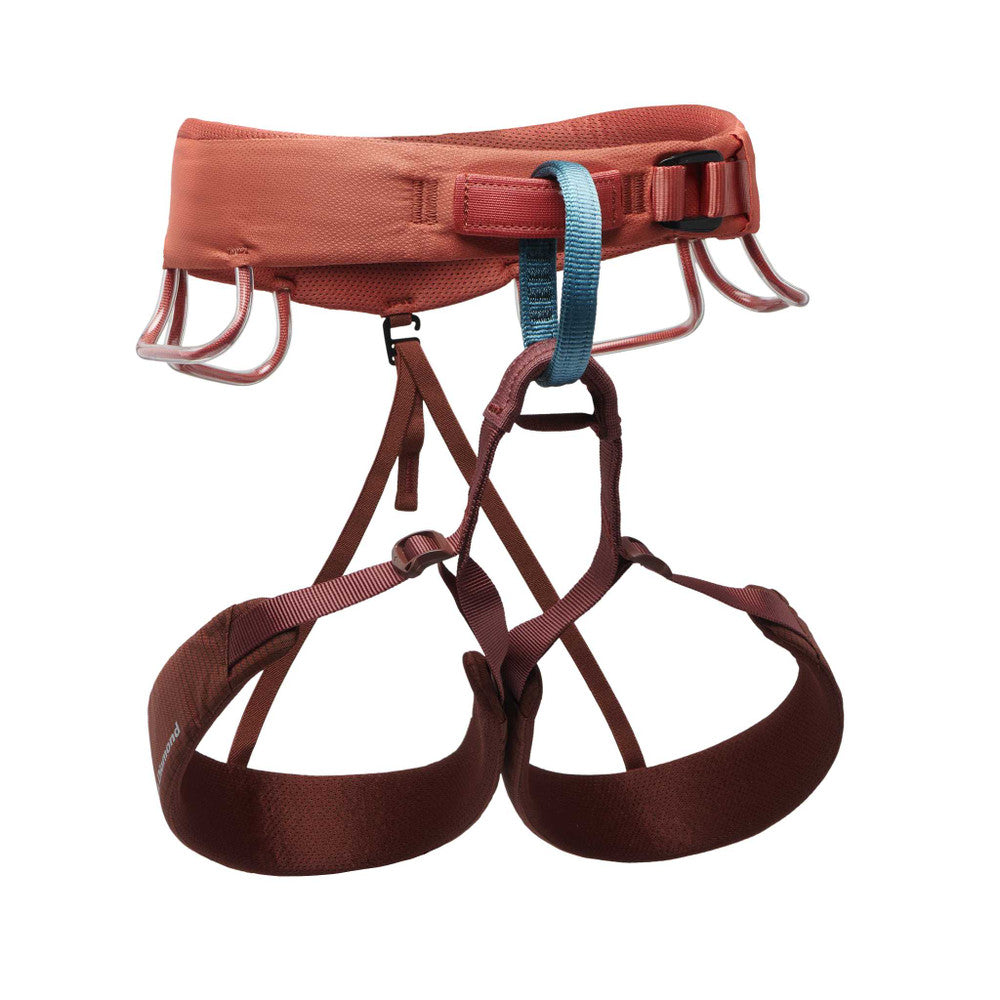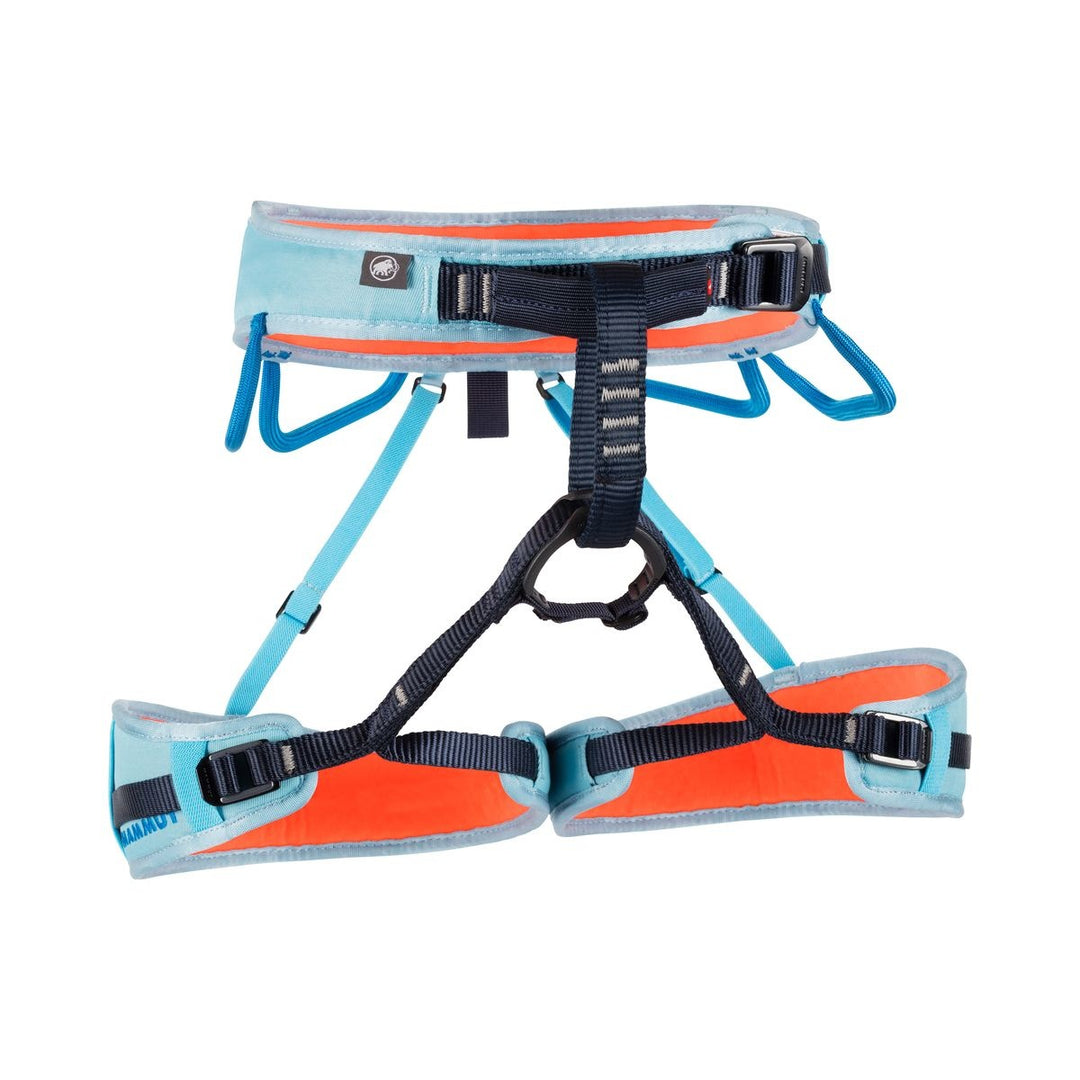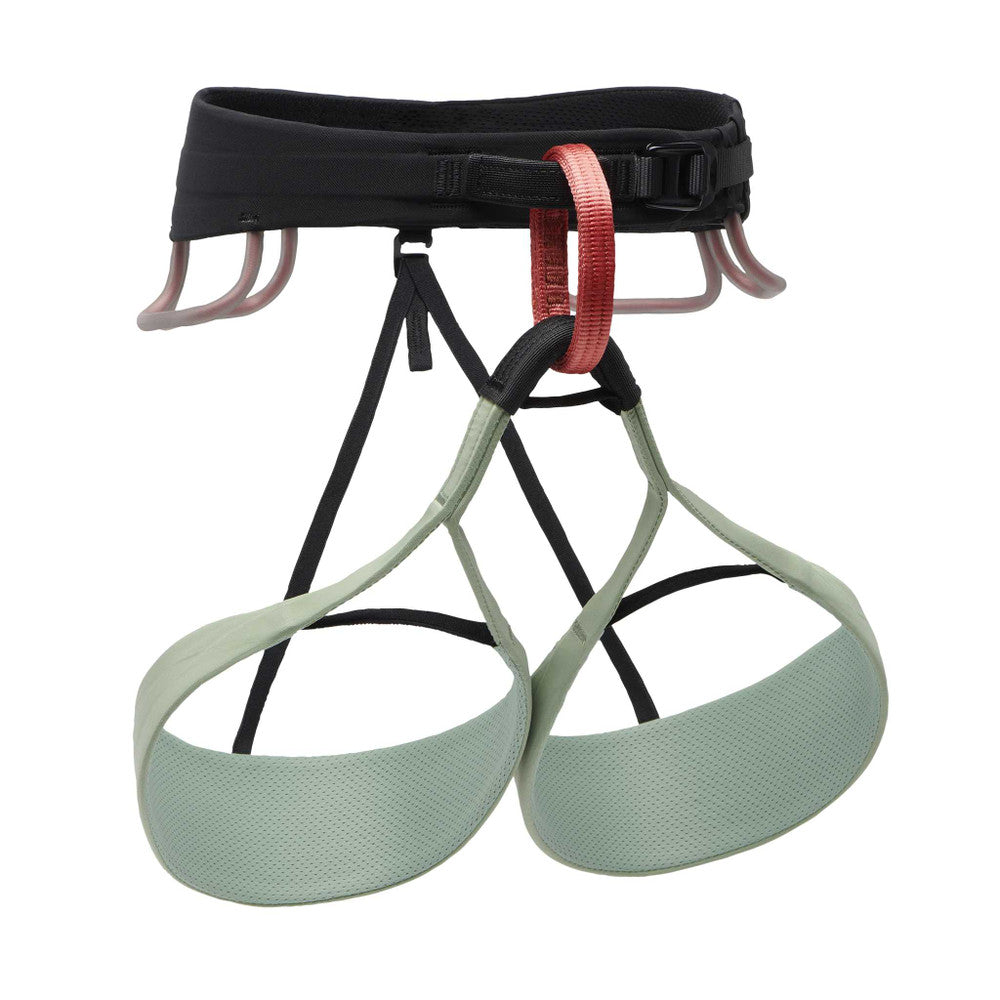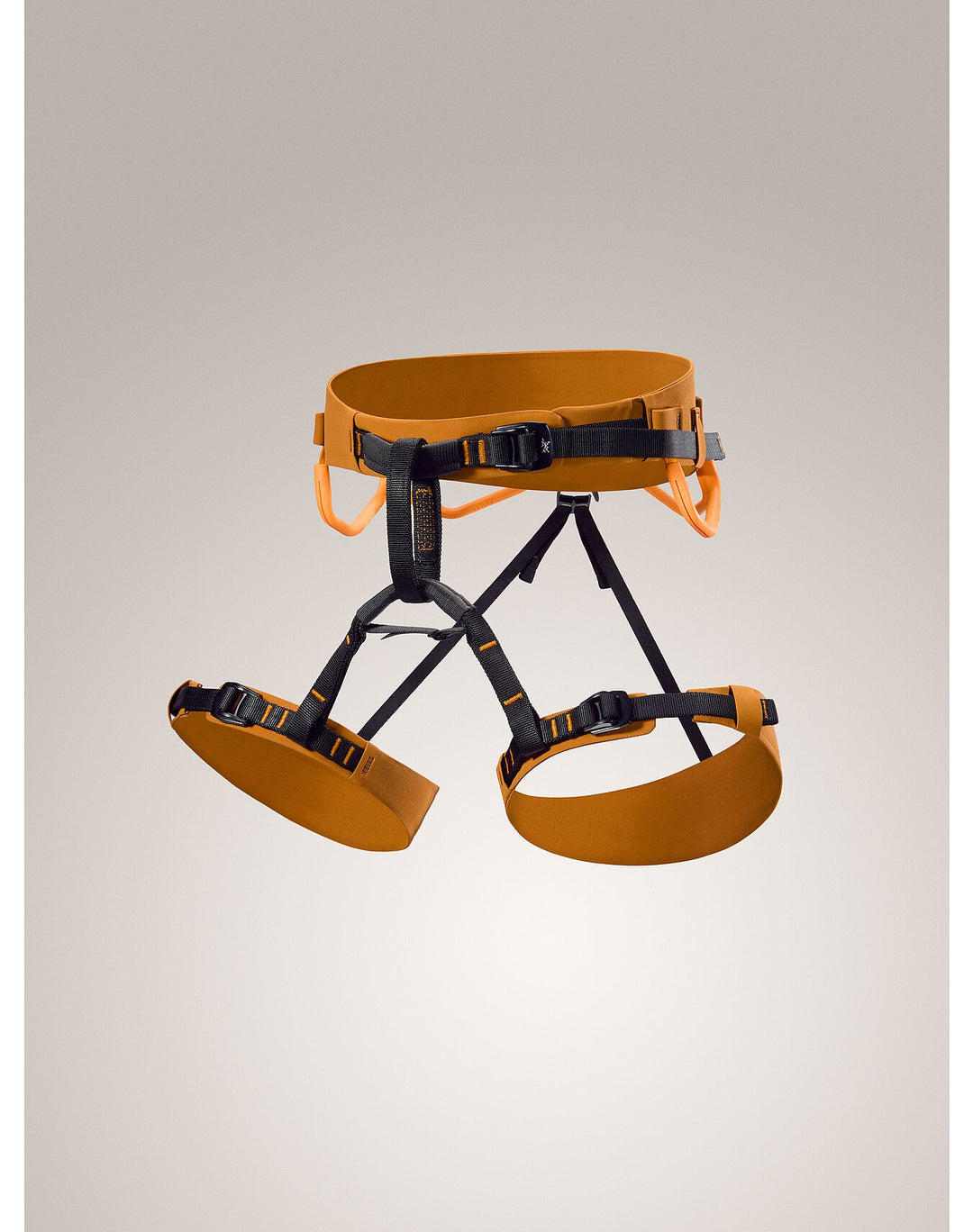A climbing harness typically consists of several components that work together to provide safety, comfort, and functionality. Here are the main components of a climbing harness:
Waistbelt: The waistbelt is the central part of the harness that wraps around the climber's waist. It is usually padded for comfort and designed to distribute the weight and forces generated during a fall or when hanging in the harness. The waistbelt is secured with a speed buckle or a double-back locking mechanism.
Leg Loops: Leg loops are connected to the waistbelt and encircle the climber's thighs. Like the waistbelt, leg loops are padded to provide comfort during extended periods of hanging. They are also adjustable to ensure a secure fit and accommodate different clothing layers.
Buckles and Adjusters: Climbing harnesses typically have multiple buckles and adjusters to secure the waistbelt and leg loops. These allow climbers to customize the fit for comfort and safety. Common types of buckles include auto-locking buckles, double-back buckles, and speed buckles.
Gear Loops: Gear loops are attachment points on the waistbelt used to carry climbing equipment such as quickdraws, carabiners, cams, and other gear. The number of gear loops varies depending on the type of harness, with sport climbing harnesses usually having fewer gear loops than trad or alpine harnesses.
Haul Loop: A haul loop is located at the rear of the waistbelt and is used for clipping a rope, chalk bag, or other accessories. It is not intended for weight-bearing purposes during falls and is primarily used for convenience.
Tie-in Points: These are reinforced loops on the waistbelt where the climbing rope is attached using a suitable knot, such as a Figure 8 Follow Through or a Double Bowline. The tie-in points are load-bearing and are designed to distribute forces safely in the event of a fall.
Drop Seat or Adjustable Leg Loop System (Optional): Some climbing harnesses feature a drop seat or an adjustable leg loop system that allows climbers to quickly and easily remove the harness without having to take off their shoes and other gear. This feature is particularly useful for bathroom breaks or adjusting clothing layers.
Hauling and Rappelling Loops (Optional): In certain climbing harnesses designed for big wall or alpine climbing, there may be additional attachment points or loops for hauling and rappelling systems. These loops provide versatility for multi-pitch and multi-day climbs.
Padding and Construction: Climbing harnesses are often designed with varying degrees of padding for comfort and support. The construction and materials used in the harness play a crucial role in its overall durability and performance.





































